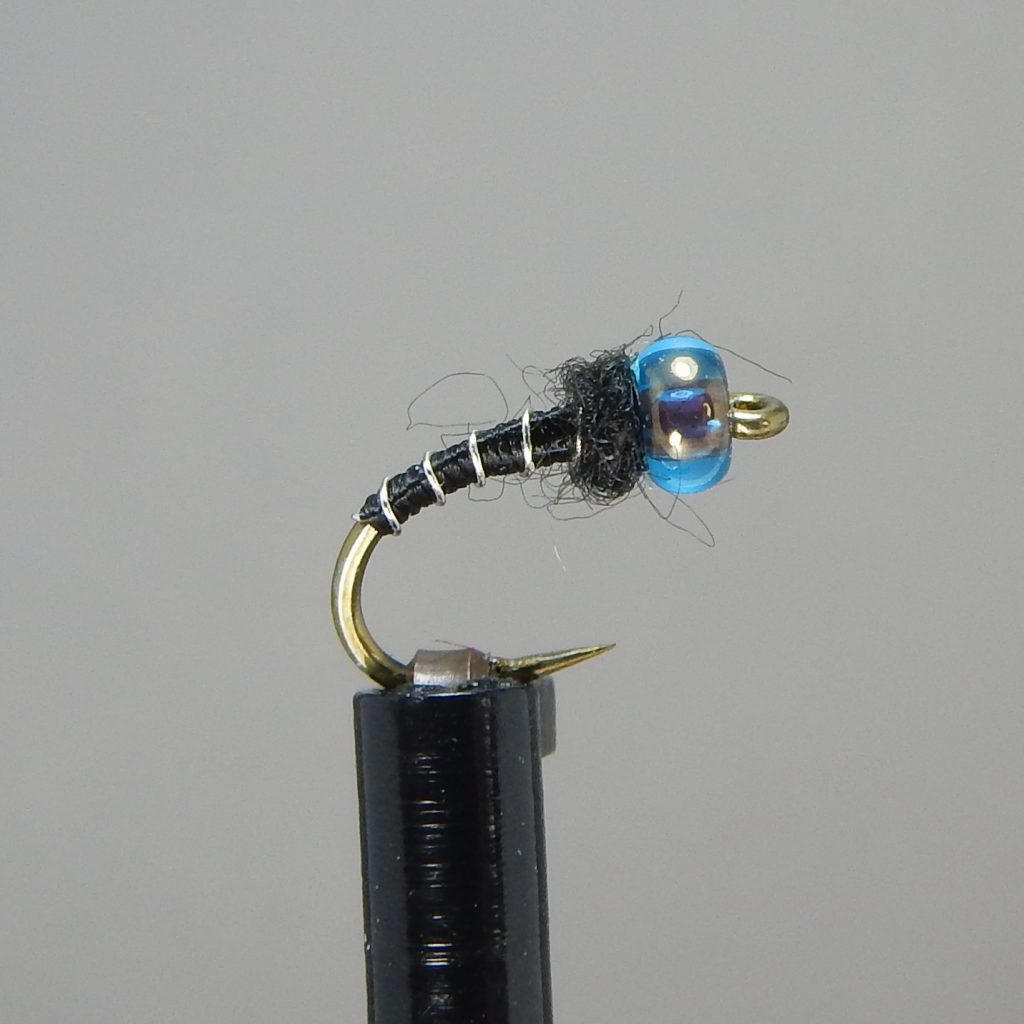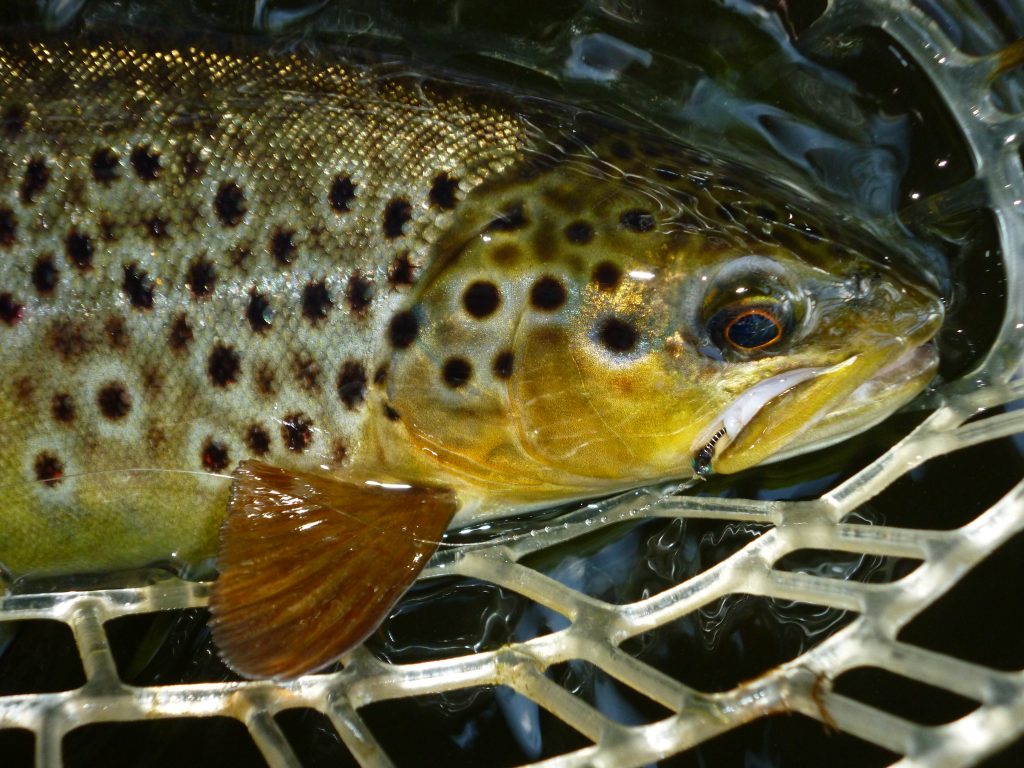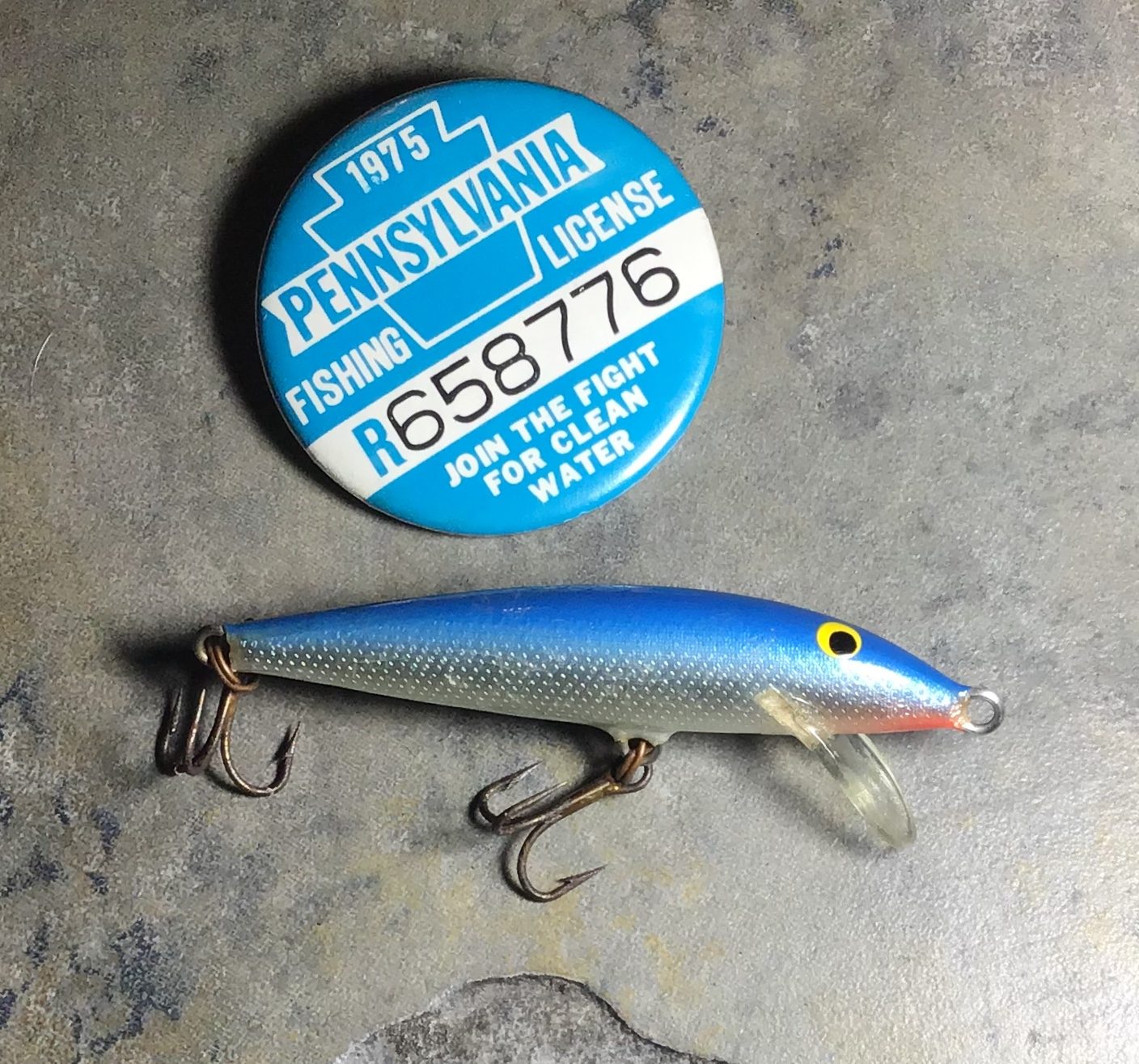The short story: Several years ago I bumped into Ed Engle at the fly show in Chicago. Ed was conducting a fly-tying session, tying small flies of course. I showed Ed several flies that I tie and fish as I am also very fond of small flies. One of the particular patterns, by no means a new invention, features a “blue” bead. A follow-up conversation regarding the pattern and choice of bead color prompted more thought on the subject of colors and what exactly does a fish see and what causes a trigger reaction. Incidentally, Ed added a dedicated section on “triggers” in his book called Trout Lessons inwhich he writes about The Blue Fly. My research and the seemingly “legendary” productivity of this small blue beadhead midge pattern can be found below, preceded by several other accounts of the power of blue.
Where it all started: The color “blue” has always been prevalent in my fishing history. When I was a young boy I would smallmouth bass fish with my father and sometimes my grandfather. We would use spinning gear and Original Floating Rapalas to “plug” crystal clear streams searching every rock for a hungry fighting machine. Of course when my grandfather was present the competition seemed more like generational warfare. Pap would say to me- “use this to beat your Dad”………..it was a number seven floating “blue” Rapala. My Dad fancied the smaller number five floating silver (black backed) Rapala and sometimes called upon the chartreuse if he really needed to get the job done. Regardless, it was no match for the extremely productive blue and white Rapala. In fact, looking back now, it didn’t matter if it was sunny or cloudy, windy or calm, the “blue” Rapala produced.
More “blue”: Years later I was introduced to the art of fly-tying and sport of fly-fishing and eventually converted almost exclusively to fly-fishing. I love to travel, fishing new venues and learning regional techniques and patterns. It was on a trip to the UK in 2003, to represent the United States at the Angling Fair at Chatsworth, that the power of “blue” surfaced again. While bunking with a fishing friend, Oliver Edwards, I swiped a few flies. Yes, I readily admit to “stealing”………..why? Oliver’s fly boxes never left his sight and I joked by saying that he had an exact accounting and complete inventory for each pattern. So one evening while Oliver slept I tied flies feverishly into late hours of the morning in preparation for the grayling and browns we would face at daybreak. I tied midge patterns, BWO’s, small black terrestrials, the famed pheasant tail…..anything that I could think we might need. Running out of time I passed on big, bushy dry flies (which I thought inevitably would only be used in a sacrificial manner to float a beadhead if necessary) and “lifted” a sizable Klinkhamer from Oliver’s dry fly box. The next few days we fished several different venues and to my surprise the Klink itself was very productive catching both brown trout and grayling. A more careful inspection of the fly revealed a white post, grizzly hackle, peacock herl thorax, dark dubbed body ribbed with a “blue” material. Future conversations with Oliver (remember I had to lay low for a while so he didn’t know that I swiped his fly) revealed “his” conviction in the power of blue. Oliver says that he has no specific reason behind the productivity of “blue” but confirms its effectiveness. In fact, Oliver features this very fly on one of his tying DVDs called Essential Skills with Oliver Edwards “Big Dry Flies for Fast Water”. He lists this very pattern and actually fishes it on the DVD- it is called The Edwards Bluebottle Klinkhamer. The recipe sheet with the DVD calls for a body ribbed “with fine flat blue lurex”.
The GR-Blue Bead Midge Pupa. Living in Northwest Ohio does wonders for those who love to boat walleye on Lake Erie………….but it doesn’t do much for a passionate, trout chasing, fly fisherman. Helpless as a child without wheels I fly-fished for bass and bluegill. Post drivers license age and outfitted with a Gazetteer I began to fish many waters- often searching for spring creek water and technical situations. This interest and a lifestyle that seemed would eventually get busier lead me to join RockWell Springs Trout Club in Castalia, Ohio- just one hour from home. RockWell is a man-made creek that is over one hundred years old. At first glance one would think that it has everything that a world class fishery has- crystal clear, gently flowing, 52 degree water and plenty of healthy trout. Unfortunately, though, it does not have “bugs”………….or at least like a wild stream. Instead the trout rely on seasonal food sources such as terrestrials and minnows, dig for cress bugs and freshwater shrimp in the stream vegetation or chase midge larva and pupa. Yes sir- midges. In fact the cool waters of RockWell Springs Trout Club are infested with midge larva and pupa and the hungry trout feast on them daily. Whether sight fishing with a single pattern or using a “hopper / dropper” two fly system an experienced fisher can have a field day and get tired of netting trout.

The GR – Blue Bead Midge Pupa continues to be one of our best selling Fly-Kit’s – see our Product Page
The “test”: Over the years we used RockWell as a testing ground for fly patterns, fly rod designs and newly created furled leaders. I can’t say that we have a statistics background and have run a two-tailed beta test – but we do conduct some old fashioned on the stream research. Perhaps none of the research that we have conducted in the past twenty years is as conclusive as the “bead” test that I did on midge pupa patterns. The test was simple but the results were startling. I tied a dozen midge pupa patterns……….black thread body, silver wire rib, fine black dubbed thorax and a small glass bead. The glass beads were all the same size and from the same distributor purchased from a local craft store. Oh, I forgot to mention, I used 12 different color beads ranging from white to black and many “fishy” looking colors in between. The test was simple. I tied on a sizable Elk Hair Caddis and slipped a dropper line off the back- about 18 inches long- I measured the dropper line from the cork on my fly-rod to a guide for accuracy. I walked back to the back of the club property to a large pool- a perfect midge pool- gently flowing left to right. When I looked into the pool I could see tons of trout, about half way across the pool, as they lined up like concert goers waiting in line for a ticket. I tied on bead color number 1 and made 10 casts attempting to get a nice long drift from left to right, across the entire pool. I did this for each different color bead and recorded the results. Note: each fly had its hook point removed so that an actual hook-set could not be made- thus potentially disrupting the pool. And, I tied on a new dropper line for each different color bead to make sure that the depth was fairly equal.
The results were staggering: Watching the Elk Hair Caddis on every cast like a bait fisher watching a bobber, the “Blue” glass bead midge pupa pattern was eaten 9 out of 10 times that I cast. The Black glass bead got taken 5 times, the Blood Red glass bead got taken 4 times and the Dark Purple glass bead was taken 3 times. It was interesting to note that the White glass bead and two Green color bead patterns did not get taken at all. It was from this original field study that we really started to test this pattern.

Beautiful Brown from Northern Ireland with a GR-Blue Bead Midge in the snout!
Since these early tests, the GR-Blue Bead Midge Pupa has simply produced, catching fish virtually everywhere it has been fished in almost any kind of condition. From the Mad River near Dayton, Ohio to Iceland – the GR-Blue Bead Midge has achieved urban legend status. We can recall many accounts where we approached a fellow fisher and said- tie on a dry fly and slip this about 15 inches off the back……………most of the time before we were out of sight we heard a distant “thank you” turning to see a bent rod and a smile. This simple pattern has taken trout and grayling on the famed spring creek waters of England, it has fooled trout regularly on miles of spring creek waters of southwest Wisconsin and Minnesota, it has traveled to Montana and landed wily trout in the Park and like former Presidents it has seen Central Pennsylvania and their legendary spring creek waters. Of course, as we tend to do, we have tried to modify the pattern- might as well fix it since it is working right. But, we keep going back to the simple, legendary, effective black bodied, silver ribbed, black thorax- (special) “Blue” Glass Bead midge pupa pattern that just simply works. Why? I really still don’t know. I have tried to draw a parallel to light levels, water clarity, current speed, position of the sun, tippet size…..etc. ………..only to produce the same answer- yep get the net!
Purchase a GR – Blue Bead Midge Pupa Combo Fly-Kit today- Click Here.

